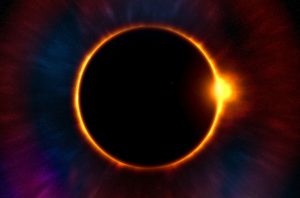Video: Tips and Tricks for Today’s Solar Eclipse
-
-
slice.mit.edu
Filed Under

A total solar eclipse will occur today, beginning at 1:28 p.m. EDT. It’s the first time in nearly 100 years that a total solar eclipse will travel cross country across the US, and the MIT community is prepared! A solar viewing party on the Kresge Oval, featuring Senior Lecturer Amanda S. Bosh ’87, PhD ’94, is free and open to the public, and others may be able to watch the eclipse from MIT’s Wallace Observatory in Westford, MA.
For MITers away from campus, the Alumni Association mailed more than 3,000 solar viewing glasses to alumni living within the eclipse’s path of totality, which will stretch southeast from Salem, OR, to Charleston, SC. (Gazers near MIT can expect to see about 63 percent totality.)
And eclipse enthusiast and Professor Richard P. Binzel will lead an Alumni Association Travel Program contingent of more than 50 MIT alumni and friends to northwest Idaho to view the full totality in person.
My official @MIT #EclipseGlasses have arrived! Selfie by guesswork - these things are opaque! #solareclipse #eclipse #nerdbliss @MIT_alumni pic.twitter.com/UpMqJq4Bop
— Liz O'Connor (@DrMicroChem) August 15, 2017
For more information on today’s eclipse, watch the Travel Program video below featuring Professor Binzel, which explains the science behind an eclipse and how you can watch it safely. Then read a portion of a Q & A conducted with Professor Binzel that was originally featured on the Travel Program website.
What’s the difference between a partial and total solar eclipse?
“A total solar eclipse is a million times more spectacular than a partial eclipse! That is not hyperbole, it is precisely the factor by which the brightness of the Sun and the sky changes (in an instant!) at the moment of transition from partial eclipse to total eclipse. At the moment total eclipse begins, the last sliver of the Sun’s disk becomes hidden behind the edge of the Moon. For the duration of the total eclipse (about two minutes), nightfall is all around you even though it is mid-day.”
Will the total solar eclipse take place near me?
“Use this Google map to zoom in exactly on where is the closest or most convenient place for you to travel to be in the path of the total eclipse on August 21.”
What about eye safety?
“An excellent link to see more about safe eclipse viewing is on the space.com website. It is not because the sun’s light is any more dangerous during an eclipse. (It’s not!) The issue is that eclipses are a time when we are all interested to stare at the sun: it is never safe to stare at the sun without proper protection.”
Where outside is a good place to watch?
“Any place outside that you can see the sun itself is a place where you can view the eclipse. Even if the weather is cloudy and you can’t see the sun at all, you will notice that everything is unusually dark as you get to the time of maximum eclipse. In fact, you may see streetlights switching on in response to the darkening skies.”
Visit the Travel Program page for the full Q & A, then check out upcoming trips offered by the Travel Program, which are open to the entire MIT community.
Share your eclipse experience on Twitter and Instagram with the hashtag #MITTravel, and search the hashtag to see shots taken by fellow alumni.







